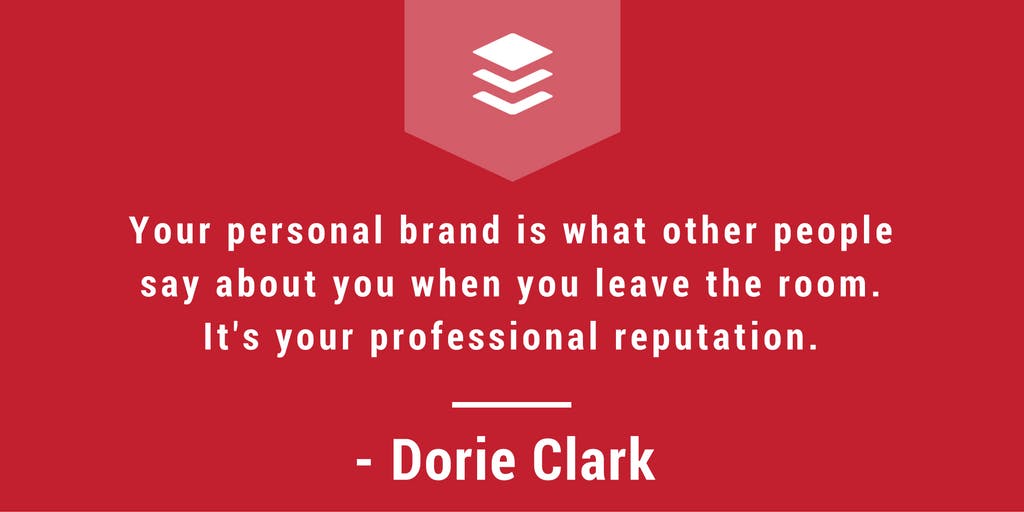How To Build Your Personal Brand As An Entrepreneur
If you are an entrepreneur, you need to consider how to build your personal brand. It could help you grow your career in leaps and bounds! Even if you are working for a company, building your own brand is a worthwhile investment. A personal brand allows you to establish a unique position in the industry you work in. And to influence a larger audience, who will be more likely to become your customers.

There are of course a wide range of different platforms and channels you’ll want to make use of to establish and manage your reputation online. But there are common elements across them. For instance, you should always clearly communicate who you are and aim to stand out so that potential clients choose you over your competition.
So why wait? Let’s get to brand building.

Tips to build your personal brand on your website:
Consider your target audience
First off – determine your target audience and what appeals to them. To do this, consider their ages, the tone of messaging that will appeal to them, their favourite marketing channels, and topics they enjoy engaging with.
Content creation is crucial for entrepreneurs looking to build their brands. And when you are armed with all of this info, you will have a better chance at communicating directly to the people that matter the most.
Use your website to tell your story
Your website is where your audience will find out all that they need to know about you. In order to build a website that you can fully leverage for your goals, focus on these areas:
Your homepage
Provide an overview of your personal brand as an entrepreneur on your home page. Let your customers know what your unique value proposition is, what companies you are working with, and have worked for.
About page
Give in-depth details about yourself and how you can provide value for your customers through your work. Be sure to keep all the information relevant to the image you want to portray. Nothing less, nothing more.
The contact page
Make sure that you always keep this page updated with your contact information, so customers can reach you. You can also include a form that customers can submit to you with their queries. You can also consider adding the option to book a free consult.
Your blog
Show your expertise through your blog page. Look at covering important and timely topics that are relevant to your services. And make sure you include unique feature images, and shareable graphics to reinforce your brand. If you don’t have a background in design, a flat-fee graphic design service like Kimp could be a good solution.
Your portfolio
Show off the work you have done and the skills you have, so customers can decide if they want to hire you or recommend you.
Customer testimonials
This page can be your biggest form of social proof, where your customers can tell others about the experiences that they had working with you.
Based on the niche that you specialize in, there may be other pages that are needed. Have a look around at what your competitors (your rivals and your idols) are up to, to get some ideas.
Why email marketing matters and how to build your personal brand with it
Email marketing can actually be even more effective than social media, websites, and other platforms like WhatsApp. This is because you’re reaching out to an audience that has expressed interest in your content. And has joined your email list, giving you consent to connect with them.
Here’s how you can make email marketing work for you:
Create your email list
To create an email list, you’ll want to use a combination of tactics. A landing page, subscribe pop ups and website banners are some of the common and effective methods. A few other options include:
- Create a personalized call-to-action to add to each of your blogs and landing pages
- Use pop-up or slide-in sign up forms on each page of your website
- Try timed surveys to engage your site visitors
- Be sure to describe value in your CTAs so it’s clear what your subscribers will get – and encourage them to sign up immediately
- Mention your newsletter on your social media and even your email signature
- A/B test your methods to see what works best for for your audience
Personalize your emails
When you segment the emails you send out, you will be able to successfully market them to every subscriber on your list. It is true that people have subscribed to your newsletter because they like what you bring to the table. But that does not mean that they will also align with all of your personal branding goals.
Segmentation based on criteria like location allows personalization that can make your content really resonate.
Share helpful content
Yes you want to promote your brand. But your content shouldn’t come across as being too salesy. Consider sending out a monthly newsletter that includes content that educates, informs and/or entertains. Since your newsletter can be designed to represent and reinforce your brand, your content doesn’t always have to message it so obviously.
Track your metrics
Be sure to track how much, or how little your audience is engaging with your emails to figure out how to keep tweaking them. You’ll want to consider open rates and click through rates, especially as you test to see which day and what time of day gets you the best results.
Have a compelling subject line
If you want more people to open your emails, your subject lines have to be interesting. Personalize your subject lines and make sure that they build curiosity while also being concise.
Prioritize your visual identity
You need to use the right images, fonts, colors and GIFs to represent your brand. But don’t go overboard. You must make sure that your emails load fast because the majority of your viewers will use their phones to check through emails. And nothing makes someone give up faster on an email or a website than slow load times.
How to use social media to build your personal brand
Update your social media accounts thoroughly
Decide which social media platforms are best to connect with your target audience. If you have any old accounts that you have been using on and off, delete and deactivate them. And on the business profiles that you create, include information that is up to date and engaging. Having a good social media presence will help you drive traffic towards the high quality work that you would like to showcase. You can also cross-promote your website and whatever offers you have on your emails on your social media as well.
Articulate your expertise clearly
Consider what your niche is and define it if you haven’t done so previously. You can then create content that allows you to showcase your expertise to your audience on social media. Look at what content has received great responses in the past, if that is an option. If you are just getting started, you may have to experiment and see what type of content works the best for you. You can of course take reference from competitors and other brands operating in your niche, and targeting similar target audiences.
Use apps to automate
We know that maintaining a dynamic social media presence can be time consuming. That’s why you should make use of scheduling software like Buffer and Hootsuite. They allow you to connect your social media networks for easy cross-promoting. But nowadays schedulers also offer additional features like social listening and content curation which make it easier to know what your audience is saying about you. And to keep posting content that will engage them.
Make sure you share regularly
You must post regularly, but must also draw the line between overposting and underposting. Usually posting 3 – 4 times per week is enough to make an impression. To post even more, don’t worry about it all being original content that you’re creating and sharing. Repost from accounts that are relevant to your audience. Curating content is a great way to offer value to your followers. Aggregators sites like Feedly are handy for this, as they’ll serve up relevant content based on the feeds you subscribe to. After you start posting, be sure to look at the analytics on a regular basis to see the days and times that work best for you.
Dos as you build your personal brand
- Create engaging, original content.
- Share your achievements and milestones.
- Share your knowledge of your industry by commenting on trends and news stories.
- Include interesting, fun facts about you and your career. Personal touches can go a long way.
- Join groups on social media that are focused on industries and topics that you relate to. You can share your insights and also position yourself as an expert.
- Maintain consistency in your brand image, tone and voice. Your messaging should always be immediately identifiable.
Don’ts as you build your personal brand
- Don’t use derogatory language. This should go without saying, but we’re saying it anyway. It’s never appropriate, even if someone sends you a message or comment including offensive terms. Be sure to respond professionally, and look into ways you can protect your brand by reporting or blocking their accounts.
- Avoid jumping around and trying to position yourself as a generalist. Be clear about the areas that you focus on and how you drive results.
- Don’t pretend to be someone you’re not. Authenticity is important when you’re building your personal brand as an entrepreneur.
- Avoid going for long stretches of time without publishing and sharing content. There’s a saying that you either publish or perish. And this doesn’t have to be long form articles – it can be videos, infographics, quick social posts, or short blogs. Just keep the content coming.
Have fun when you develop your personal brand
As an entrepreneur, you probably spend a ton of time thinking about your clients. Thoughts of how to support them and add value for them likely fill your days. And that’s why getting to turn this lens on to yourself can be a lot of fun. You already have all of the tools that you need. You just need to flip the script and make yourself the focal point of your story. Just remember, it’s a story that gets to keep on evolving and growing as your career as an entrepreneur does.


